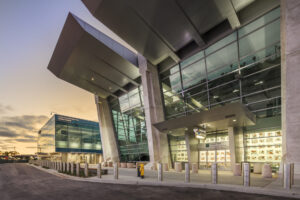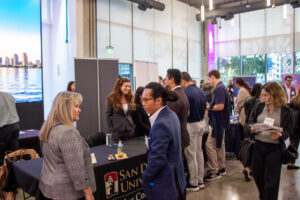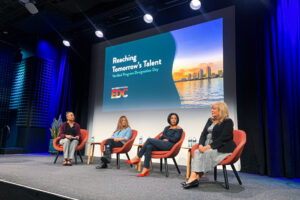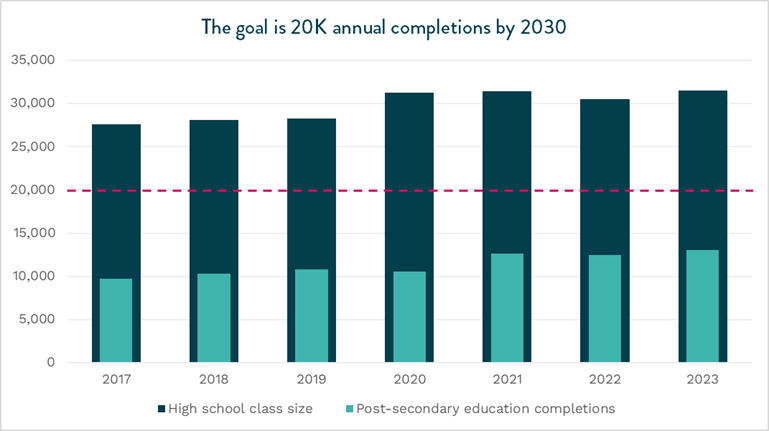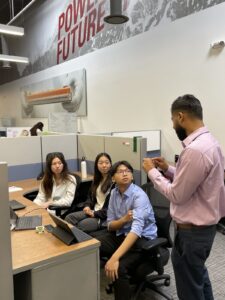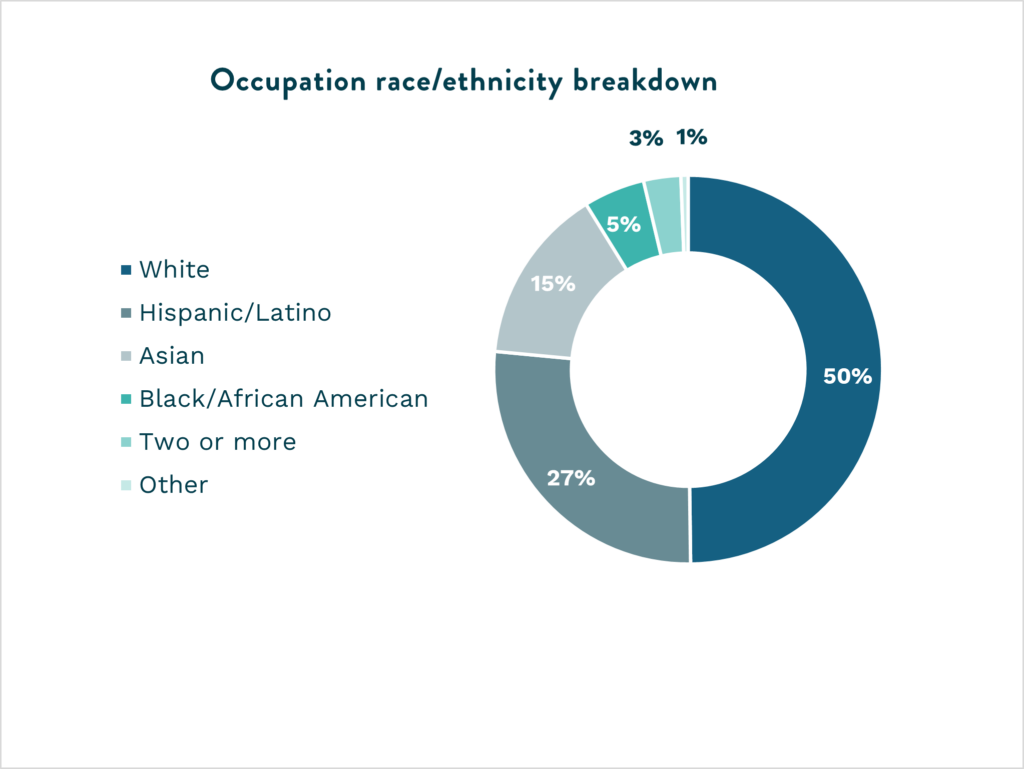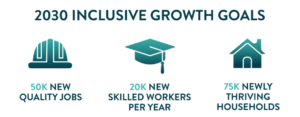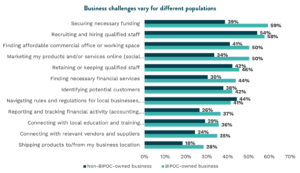To celebrate and inspire the efforts of regional employers, EDC’s Inclusive Growth blog series highlights San Diego companies helping to drive progress on the 2030 Inclusive Growth goals.
Launched in 2018 and informed by a partnership with the Brookings Institution, the Inclusive Growth initiative sets 2030 goals for San Diego related to increasing: 1) the supply of talent, 2) quality small business jobs, and 3) newly thriving households. The goals inform San Diego’s economic priorities and make the business case for economic inclusion.
Small businesses are the backbone of the economy
San Diego small businesses represent 98 percent of all firms and account for 59 percent of total employment, outpacing the national average. In 2023, San Diego County ranked third for most new business formations in California. Despite significant contributions, small businesses struggle to keep up in an increasingly expensive market.
With a goal to add 50,000 new quality jobs in small businesses by the end of the decade, EDC data shows a surge in progress after years of steady recovery. In 2023, the region added 48,481 new quality* small business jobs, nearly surpassing the goal.
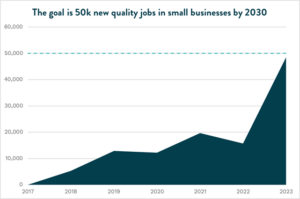
While the significant rise in quality jobs is reassuring, small businesses still struggle to compete. Employer-led efforts to support small businesses and increase the number of quality jobs are critical to the future of the region’s economy, and Cultura is among the local companies contributing to the progress.
How Cultura is moving the needle
Cultura is a San Diego small business specialized in a broad range of furniture solutions tailored to fit the needs of its clients. Since 2009, Cultura has partnered with more than 1,250 companies to build spaces that support their businesses, people, and ultimately culture. Whether it’s designing inviting lobbies, creating flexible workspaces, or setting up collaborative meeting rooms, Cultura excels at transforming environments that foster both productivity and well-being.

As a diverse, women-led company, Cultura plays a critical role in the region’s economic ecosystem. By providing tailored solutions for office environments, Cultura directly supports the infrastructure needs of San Diego companies while also adding to the region’s number quality jobs. Cultura also prioritizes small, local businesses in its internal vendor selection process, further strengthening the local economy.
When local firms choose to work with local vendors, they are not only fulfilling their needs but also investing back into the regional economy. This practice helps keep procurement dollars circulating locally, promoting quality jobs and fostering a more resilient local economy. In fact, EDC has found that if local anchors shifted just one percent of existing spend to local, small, or diverse suppliers, San Diego would see millions of dollars in economic impact and thousands of jobs.
The synergy between large anchor institutions, smaller businesses, and local vendors like Cultura creates a powerful multiplier effect that fuels job growth, drives innovation, and sustains a thriving economy.
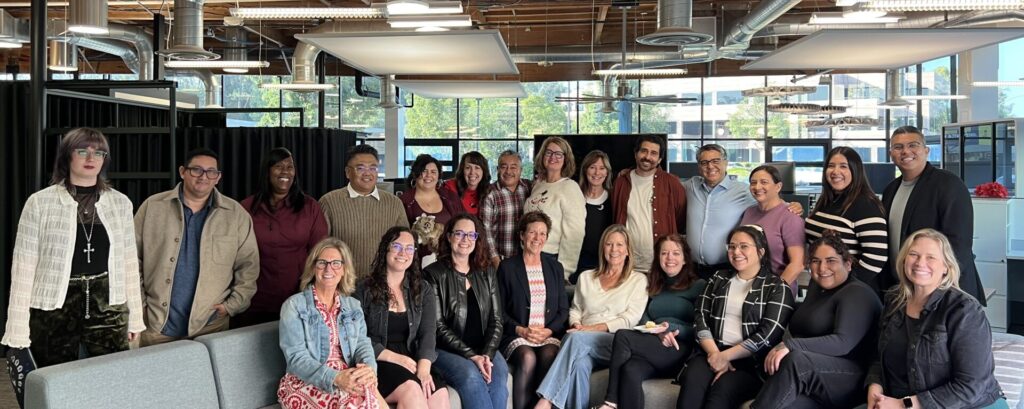
Cultura’s mission to create the best work environments begins internally. Offering flexibility in the work schedule, competitive salaries, matching retirement contributions, annual bonuses, and a unique work environment, the company demonstrates how small businesses can contribute to Inclusive Growth progress.
Join the movement
Progress on EDC’s 2030 Inclusive Growth goals is only achievable with and through the region’s employers who must be committed to scaling innovative and intentional solutions in San Diego. Companies like Cultura are helping to collectively pave the way toward a more inclusive regional economy. Join us:
- Endorse the goals, and be part of the change San Diego’s economy demands.
- Learn more and join EDC’s Anchor Collaborative.
- See full Inclusive Growth Spotlight series.
*A quality small business job is defined as one provided by a company with fewer than 100 employees and that pays at least $23 per hour and provides healthcare benefits.
To get involved in EDC’s work, contact:

Bree Burris
Sr. Director, Communications & Community Engagement

